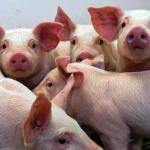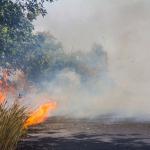How to Care for your Piglets
How to Care for your Piglets
Caring for your piglets is of utmost importance to ensure the consistent development of your animals. Below are some main guidelines that will help you to maintain their health and productivity.
Before Farrowing (birthing)
Good quality piglets start with selecting animals of good genetic stock for breeding. The average gestation period (pregnancy period) of a pig 114 days during which the farmer must ensure that the sow is properly fed, dewormed and is housed in a sanitary environment. The sow should be cleaned and moved to a farrowing pen at least 4 to 5 days before the due date. The udder should be checked for lumps and the area cleaned daily to prevent the introduction of any disease when the pigs are born.
Farrowing
On the day of farrowing it is important for the farmer to be present. Pre-weaning death losses occurs in the first 72 hours after birth. Piglets are born with a body temperature of 102-104 0 F but they lose body heat rapidly.
It is very important that newborns are dry, warm and free from draft. Piglets are born one in every half hour. If the period lasts for more than an hour, veterinary assistance should be sought.
After Farrowing
Navel Care
The navel of the piglet should be sanitized through the use of iodine solution to prevent the entry of bacteria. The navel should also be cut within a few days after birth to a length of approximately 2 cm.
Iron
Piglets are born with a limited supply of iron which can lead to anaemia resulting in poor appetite and growth. Iron supplement should be administered as soon as possible after birth. This is administered orally or through an infection in the muscle in the neck. (1cc of iron supplement to be repeated after 10 days). Be careful not to overdose as an overdose of iron may induce shock.
Identification
As part of god record keeping, pigs can be marked by ear notching, ear tattoos, ear tags or other methods of permanent identification. This activity should be carried out soon after birth to reduce stress.
Preventing Piglets’ Exposure to Diseases
Preventing disease involved five basic areas: (1) source and handling of primary and replacement breeding stock (2) rules governing movement of people, vehicle, materials and pigs, (3) layout of the farm, (4) location of a new farm, and (5) cleaning the farrowing quarters and the sow.



